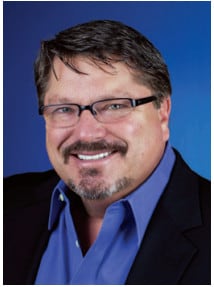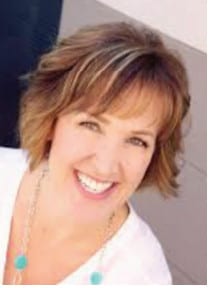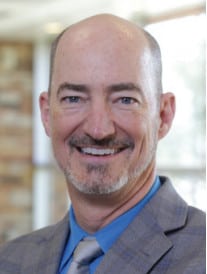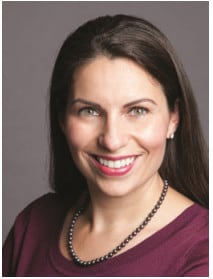Different practice models, unique challenges, considerations, and rewards — find out what these dentists did when transitioning to an exclusive DSM practice.
An increasing number of practitioners are transitioning from restorative dental practices that provide dental sleep therapy to exclusively practicing dental sleep medicine (DSM). These are two very different practice models with unique challenges, considerations, and rewards.
We asked several dentists that have made this transition 3 questions about their leap to dental sleep practices. Here are the questions and the answers IN YOUR OWN WORDS:
- What two things do you wish you would have done differently when transitioning to a DSM-only practice?
- What has been most challenging and most rewarding about the shift?
- What words of advice do you have for any colleagues considering making this leap?
Todd Morgan, DMD, D.ABDSM

- Transitioning to a full-time dental sleep practice was a dream for many years. I just had to find the right timing and sell the GP practice. I divided the GP practice and sleep into two separate corps for a few years to establish value for the sale. I loved dentistry but was ready for a change.
I should have done it sooner. DSM was my passion, and it can sustain you if you are considering this transition, provided you have developed the DSM component of your practice into a referral relationship with physicians. The key is getting a relationship with top docs in your neighborhood.
- A real challenge was acting like a specialist in the sense you must maintain and nurture relationships with referring doctors. Staff must be trained regarding the importance of sleep. DSM assistants do not grow on trees, so selecting the right team is paramount.
The rewards are plentiful. Once a strong team is in position, you can truly relax and enjoy doing DSM with confidence that records are complete and thorough. My assistants record all of the notes and then I edit when needed. I enjoy the ergonomics! Now, I can sit up and save my back from stress. I enjoy the interaction with my patients tremendously. No two cases are the same. Each has a unique history that keeps me coming! How cool is that?
- Ask yourself, “Can I afford to go all DSM?” Make sure it makes economic sense for you. Trust me, you cannot find a cooler way to “retire” from dentistry. Be sure you have a passion for saving lives – sleep patients are some of the most grateful. I have no regrets and after 33 years of general dentistry, I welcome this change. It is a privilege to continue to serve and share your knowledge with your fellow man.
Stacey Layman, DDS, D.ABDSM

- I wish I would have done it sooner. Once I made the decision to practice sleep only, I was able to focus, improve patient care, and my referrals skyrocketed. The other mistake I made was trying to do DSM exclusively within my general dental practice. Instead of seeing more sleep patients and focusing on building that practice, I spent most of my day answering questions in the dental office and socializing with dental patients.
- Let’s begin with most challenging – setting up systems, i.e. software and front office flow. Without the right person in the front office and the right systems, you will fail. And most rewarding? My stress level has gone from an 8 to a 2; and that’s on a ‘bad’ day. Most days feel like a party. I don’t have emergency calls or any unhappy patients. OK, there is an occasional dissatisfied patient, but it is extremely rare. I will NEVER give another injection as long as I live:)
- It takes time. PERIOD. Start building your referral network and getting your name out in the community. Once you feel comfortable treating sleep apnea and billing appropriately, just do it. Don’t overthink it, just DO IT.
Kent Smith, DDS, D.ABDSM

- I really wish I would have transitioned earlier. There was a natural dip in income when I finally went cold turkey, but it righted within a year. I could have saved some aches and pains that have stayed with me from contorting myself to see the distal-buccal root caries on #16. The second would have been to have bought technology earlier. It pays for itself and patients appreciate us being on the leading edge.
- It’s difficult to recall ten years ago when I made the shift, but the challenge was in explaining why I was making the move to a group of longstanding, loyal patients.
The rewards are many, but if I must choose one, I would pick the dizzying decrease in number of stressful moments per day. I find much more time to work ON the practice instead of IN the practice.
- The biggest problem dentists have is thinking that whoever takes over their dental patients will not treat them as well as they have. You MUST let go of that attitude, or you will struggle more than you should. You also can’t do this alone. Ask for suggestions from others who have gone through it. It takes just as much work to build a dedicated DSM practice as it did to build your dental practice.
Bill Scheier, DDS, D.ABDSM

- I wish I would have properly staffed and sufficiently separated the sleep practice from the dental practice. It’s critically important that you establish a well-qualified care-coordinator that is SOLELY responsible to oversee the DSM portion of the practice – all phases, both administrative and clinical. Ideally this person is an exemplary communicator and someone who can grow.
Second, immediately isolate DSM numbers and track them before transitioning. This will make your life so much easier during sale negotiations.
- I wish I would have properly staffed and sufficiently separated the sleep practice from the dental practice. It’s critically important that you establish a well-qualified care-coordinator that is SOLELY responsible to oversee the DSM portion of the practice – all phases, both administrative and clinical. Ideally this person is an exemplary communicator and someone who can grow.
- The biggest challenge has been practicing DSM versus restorative dentistry and thinking like a physician rather than a Successful treatment in DSM is accomplished and defined differently than with dentistry. It takes some time to shift your thought processes.
Rewards? Reduction of physical demands of treating dental patients and mental/emotional demands of working with a large staff. The pace of DSM is much more enjoyable. DSM feels like a hobby compared to the rigors of a dental practice. Patients value DSM therapy more. For me, as with dentistry, DSM provides a venue to establish and advance a passion for the confluence of science and art.
- The biggest challenge has been practicing DSM versus restorative dentistry and thinking like a physician rather than a Successful treatment in DSM is accomplished and defined differently than with dentistry. It takes some time to shift your thought processes.
- JUST DO IT!! Plan for the short- and long-term. Don’t “dabble”. Be proactive. Don’t hire out of need; create that care-coordinator position and help it flourish. Obtain a practice software and use consulting Use the dental practice to initiate and fund the sleep practice.
Krissy Connor, DDS, D.ABDSM

- One thing I would have done differently during my transition is focus on relationship building with physicians in the airway therapeutic area. It is so important to work closely with medical colleagues as it offers more comprehensive care, and it improves patient outcomes.
The second thing I would have done differently is taken a high intensity crash course in medical billing. Oral appliance therapy (OAT) is a medical treatment for sleep apnea and patients expect to use their medical benefits to cover the cost. Medical billing is a great service to be able to offer to patients.
- One thing I would have done differently during my transition is focus on relationship building with physicians in the airway therapeutic area. It is so important to work closely with medical colleagues as it offers more comprehensive care, and it improves patient outcomes.
- The most challenging thing was changing the mindset of medical providers about oral appliance therapy. It is a viable medical treatment for many patients, but many medical providers still do not know the benefits of OAT.
The most rewarding aspect of the shift has been the trust that my referring providers have in the service that I provide for their patients. Through the years I have been treating patients, I have been able to witness the change in mindset in the medical community about OAT. I would like to believe that the change happened because of the collaborative effort between myself and my medical colleagues. As I have worked together with them to treat their patients, they have witnessed the tremendous benefits OAT has offered.
- The most challenging thing was changing the mindset of medical providers about oral appliance therapy. It is a viable medical treatment for many patients, but many medical providers still do not know the benefits of OAT.
- Work as a team with your medical providers. Do not try to be the medical pro Create value for your services to your medical colleagues by offering consistently quality service, treatment protocols, and constant communication with them and their staff.
One way to make transitioning to an exclusive DSM practice easier is with technology. Read Glennine Vargas’ “The Use of Technology in a Dental Sleep Practice” here https://dentalsleeppractice.com/use-technology-dental-sleep-practice/

